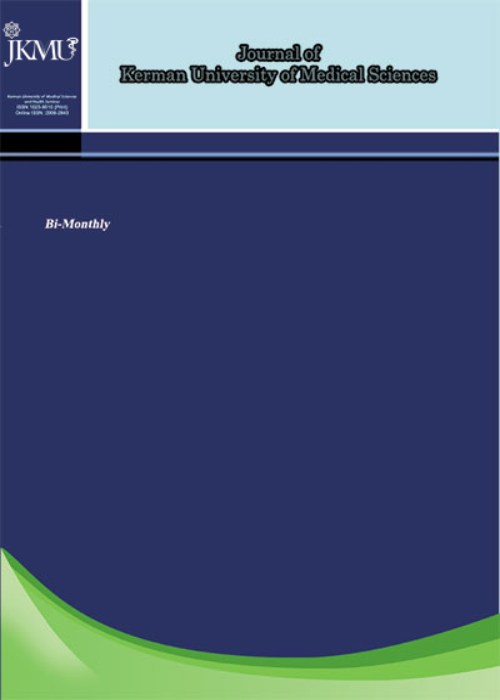Prevalence of malnutrition in hospitalized 6-24 months old infants in Kerman university hospital No.1
Author(s):
Abstract:
Malnutrition is one of the important health problems in developing countries. It may have undesirable effects on mental and physical state of children and is an underlying factor for many infections. The aim of this study was to find out the prevalence of malnutrition in 6-24 month old infants in the pediatric ward of University Hospital No.1 in Kerman. For this purpose, the weight and height of 560 infants aged 6-24 months who were hospitalized during 1 year were measured and compared with the weight and height of 496 peer children who referred to the health centers for monthly checkups. The nutritional status of both groups was evaluated according to the weight for age (Gomez), weight for height (Waterlow) and height for age (Waterlow) methods. 43.5% of hospitalized infants were girls and 56.5% were boys. In the control group, the percentage of girls and boys were 39.5% and 60.5% respectively. According to the weight for age (Gomez), the weight for height (Waterlow), and the height for age methods, the prevalence of malnutrition in hospitalized infants and control group were 76.2% and 60.5% (P<0.0001), 74.7% and 57.5% (P<0.0001) and 40.7% and 41% (P>0.23), respectively. According to the Waterlow method, there was a statistically significant difference (P<0.05) in malnutrition rate between boys (81.2%) and girls (65.5%) in hospitalized infants. The mothers’ educational level, birth order, and parents’ occupation had a significant role in the prevalence of malnutrition, but there was no significant difference in malnutrition of breast feeding and formula-feeding infants. The majority of malnutrition cases were seen in infants who were suffering from cardiac, respiratory and diarrheal disorders or urinary tract infection. With respect to the fact that malnutrition is the predisposing factor for many infections and increases the chance for hospitalization, it is proposed that all hospitalized infants should also be evaluated and treated for malnutrition. Therefore, in order to decrease the rate of malnutrition, the physicians and health care workers must acquire more experience in prevention, diagnosis, and treatment of malnutrition. The importance of proper feeding must also be explained to the families.
Language:
Persian
Published:
Journal of Kerman University of Medical Sciences, Volume:8 Issue: 2, 2001
Page:
81
magiran.com/p671047
دانلود و مطالعه متن این مقاله با یکی از روشهای زیر امکان پذیر است:
اشتراک شخصی
با عضویت و پرداخت آنلاین حق اشتراک یکساله به مبلغ 1,390,000ريال میتوانید 70 عنوان مطلب دانلود کنید!
اشتراک سازمانی
به کتابخانه دانشگاه یا محل کار خود پیشنهاد کنید تا اشتراک سازمانی این پایگاه را برای دسترسی نامحدود همه کاربران به متن مطالب تهیه نمایند!
توجه!
- حق عضویت دریافتی صرف حمایت از نشریات عضو و نگهداری، تکمیل و توسعه مگیران میشود.
- پرداخت حق اشتراک و دانلود مقالات اجازه بازنشر آن در سایر رسانههای چاپی و دیجیتال را به کاربر نمیدهد.
In order to view content subscription is required
Personal subscription
Subscribe magiran.com for 70 € euros via PayPal and download 70 articles during a year.
Organization subscription
Please contact us to subscribe your university or library for unlimited access!


